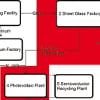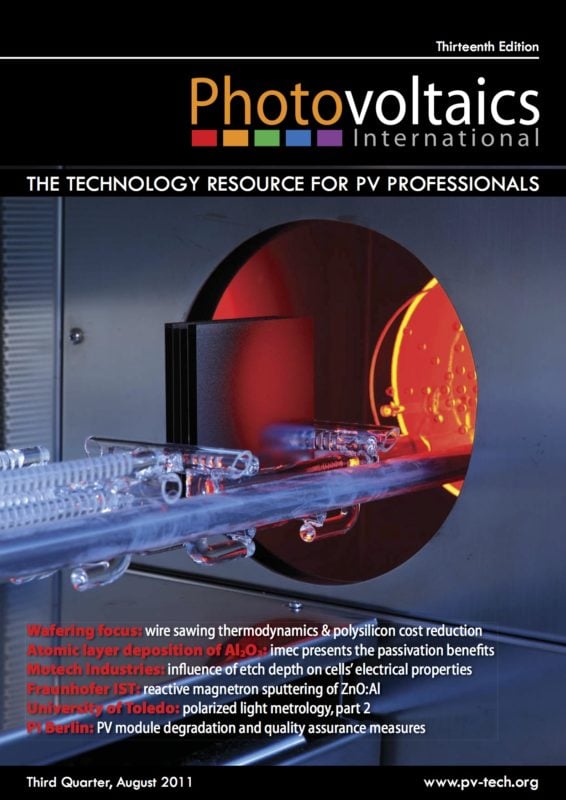By Joshua M. Pearce, Department of Materials Science & Engineering and Department of Electrical & Computer Engineering, Michigan Technological University
As the solar photovoltaic industry has matured from MW-scale pilot plants to large-scale mass manufacturing, costs of solar cells have steadily fallen. To further drive down costs of solar electricity beyond grid parity, a new approach that is being used is to investigate how photovoltaic manufacturing fits into the industrial ecology of a region. Optimizing the utilization of the waste associated with photovoltaic manufacturing itself and its components, while carefully considering geographic proximity, allows for industrial symbiosis. Industrial symbiosis engages traditionally separate industries in a collective approach to competitive advantage, involving physical exchange of materials, energy, water and/or by-products. Preliminary studies and industrial experimentation with co-production/co-location indicate that industrial symbiosis in photovoltaic manufacturing not only improves photovoltaic technology’s already stellar life-cycle environmental performance, but also provides for additional revenue streams that can be used to further reduce photovoltaic device costs. For example, simply coupling a glass manufacturing plant making substrates to a GW-scale amorphous silicon thin-film photovoltaic manufacturing plant, and using recycled glass where technically viable, can lead to a reduction of 30,000 tons/year in raw materials and a 12% reduction in embodied energy. Coupling the glass plant to a greenhouse to make use of waste heat means that more than 700 tons of tomatoes can be grown each year. Both these material and energy savings and additional revenue streams contribute to lowering photovoltaic manufacturing costs, which will play a progressively more important role in photovoltaic manufacturing at the large (>GW) scale.



